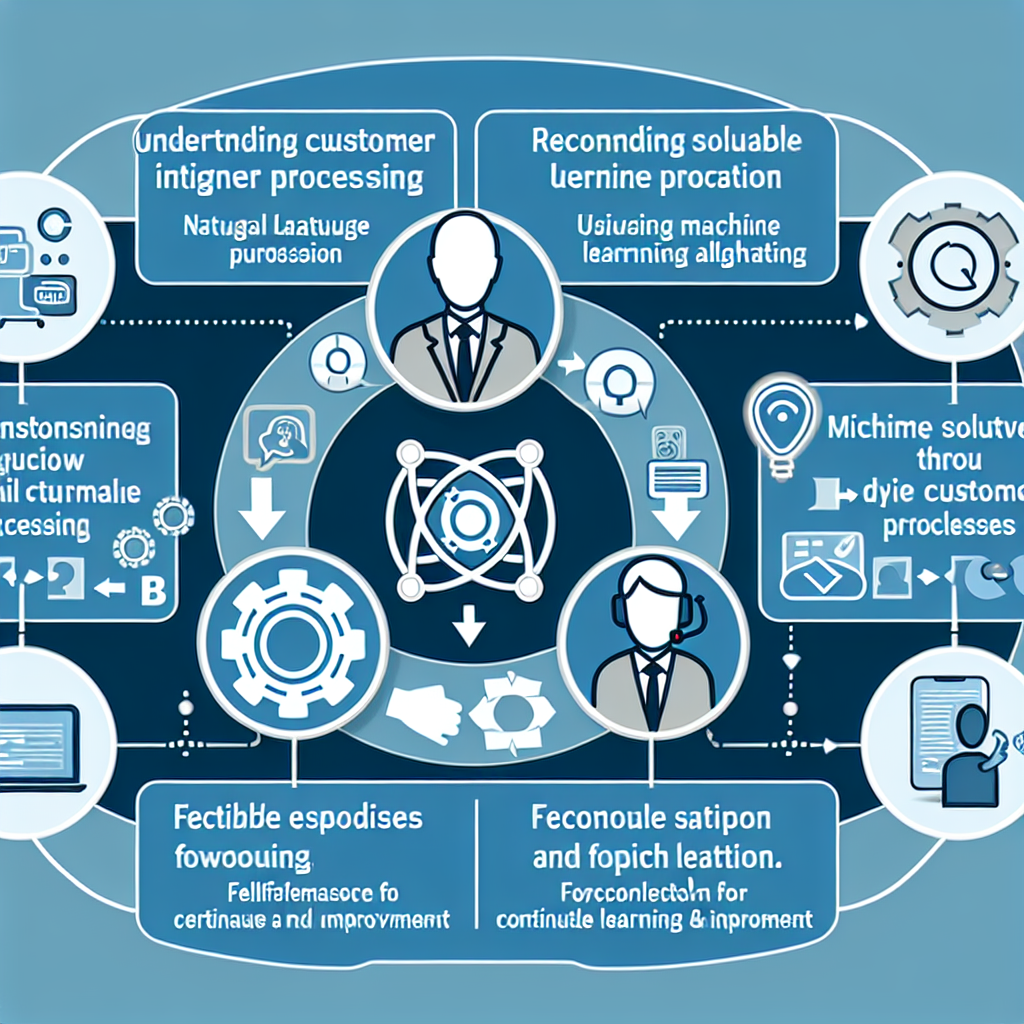
The onset of Artificial Intelligence (AI) conspicuously marks a revolutionary shift in the world of business communication. A critical component of this transformation is the application of AI in optimizing phone hold times, thus enhancing not only the efficiency of the operations but also the overall customer experience. Business communication has indeed transitioned from traditional systems to a more AI-driven approach. Its impact is clearly visible in the way businesses have started to manage their phone hold times. Embedded with predictive analytics, AI helps anticipate customer behavior and streamline the hold times effectively.
Historically, businesses have faced a major challenge in balancing phone hold times without compromising the quality of customer service. Long hold times often translate into dissatisfaction and loss of customers. Here’s where AI steps in to bridge the gap. AI-powered customer service tools can intelligently manage inbound calls, optimally distribute them to available representatives, and even predict the customer’s query based on historical data.
Moreover, AI's potential is not limited to just call distribution. AI Chatbots can handle simple queries immediately, leading to a decrease in call volumes. Chatbots are capable of learning and improving from every interaction. With AI's machine learning algorithms, they can identify frequently raised queries and predict the appropriate solutions.
By implementing AI in communication, businesses can optimize hold times while still ensuring excellent customer satisfaction. AI tools in communication are apt solutions for today’s businesses striving for efficient operations and contented customers.
Artificial intelligence (AI) is undergoing a swift transformation, particularly in the sector of customer service and call management. AI systems use a blend of machine learning algorithms and complex data analytics to streamline caller experience significantly. Specifically, call routing, prioritization, and real-time decision making have become sophisticated facets of AI, enhancing both efficiency and customer experience simultaneously.
The first aspect, call routing, uses AI's ability to analyze the caller's query quickly and automatically direct the call to the most capable assistant. Studies have demonstrated that an accurate initial routing can significantly reduce call hold times while increasing problem resolution rate. With the use of AI, machine learning 'learns' over time, constantly updating its algorithm to route calls even more effectively.
Next is the use of prioritization algorithms, or call sequencing. This is another mechanism whereby AI categorizes calls based on their urgency or complexity. With algorithms that factor in variables such as call length, caller history, and reason for calling, the AI prioritizes calls to maximize efficiency without jeopardizing the customer experience.
The last cornerstone of this AI trifecta is real-time decision making. AI can use its ever-adapting algorithms to change strategies in the middle of a service call, reacting to the caller's responses in order to optimize the outcome. The concept of real-time decision making is a revolutionary development in AI call management that significantly reduces wait times without compromising the resolution process.
In conclusion, AI call management employs these three aspects - call routing, call sequencing, and real-time decision making - to offer a balanced approach to service call efficiency and customer experience. With these technologies, businesses can ensure their customers spend less time on hold and more time having their issues resolved professionally and efficiently.
Artificial Intelligence (AI) is revolutionizing the customer service sector, offering optimal ways to handle customer interactions effectively while balancing efficiency and satisfaction. Various entities worldwide have started to implement AI to address lengthy hold times – a chief complaint among customers – with resounding success. Let's take a look at two case studies demonstrating this outcome.

The first case is that of the online marketplace, ShopDirect, which implemented AI to handle customer inquiries. They utilized an AI chatbot for this purpose, and it proved to be a game-changer, handling 2 million customer contacts annually and successfully reducing the average hold time. The chatbot was able to instantly address customer issues, resulting in a more streamlined user experience and a significant increase in customer satisfaction.
The second case involves Vodafone New Zealand, a telecommunications company that introduced an AI system to handle customer inquiries. The system, nicknamed 'Vodafone TOBi', became the first digital customer service agent available in the telecommunications industry. With this novel introduction, Vodafone now efficiently deals with thousands of inquiries daily, substantially decreasing hold times and enhancing the customer experience.
In both cases, it is clear to see how the introduction of AI has revolutionized customer service experiences, leading to more effective and efficient interactions while significantly improving customer satisfaction levels. As AI continues to evolve, we can likely expect to see its expanding influence on optimizing hold times across numerous industries worldwide.
As our era continues its rapid digital evolution, one of the key elements businesses should seriously consider adopting is Artificial Intelligence (AI). One practical application of AI is optimizing hold times in customer communication systems. Although this application holds significant potential for improving efficiency and customer experience, transitioning to an AI-integrated setup can be a challenging task. However, with the right strategies and forethought, businesses can seamlessly integrate AI into their existing communication infrastructures.
An initial recommendation for businesses looking to implement AI into existing systems is to leverage one of the many robust AI customer service programs available on the market. These programs are designed with in-built compatibility for a variety of communication platforms and are often ready to be integrated with minimal customization. This drastically reduces the logistical and technical burdens your business might face during the transition.
Another key consideration is staff training. AI tools can offer substantial efficiency and service improvements, but only if your team knows how to effectively use them. Up-front investment in comprehensive training can pay dividends in smoother operation and better customer service down the line. Consider reaching out to professional AI training services to ensure your team is prepared for the AI integration.
Of course, no digital transition, especially one involving AI, is without potential issues. A common challenge businesses encounter is compatibility between AI systems and existing infrastructure. Performing a tech-stack audit to understand your current technology capabilities versus the requirements of the desired AI solution is crucial. This will help identify potential mismatches and mitigate the risk of unforeseen integration issues.
Another potential hurdle is data privacy, particularly given the sensitive nature of customer communication data. You must ensure that the AI solution adheres to all applicable data privacy laws and regulations to protect your business and your customers.
Despite these challenges, the rewards of integrating AI with your existing communication systems to optimize hold times are substantial. By selecting the right AI program, thoroughly training your staff, conducting a comprehensive tech-stack audit, and ensuring data privacy, you can balance customer experience and efficiency as your business transitions into the digital age.
The advent of AI has revolutionized various facets of businesses, including enhancing customer service efficiency. A significant improvement lies in expediting hold times, resulting in a drastic decrease in customer frustration levels and substantial surge in experience ratings. The future of AI in optimizing hold times presents a promising picture, aiming to strike an effective balance between customer experience andcontact centre efficiency.
AI-powered chatbots are at the forefront, efficiently managing straightforward queries, which allows human representatives to address more complex cases. There's a growing trend toward natural language understanding (NLU), which enables AI to interpret human language in a much more sophisticated manner. This technological advancement presents an avenue where AI could potentially engage in more meaningful, nuanced interactions.

Also graining considerable momentum are AI predictive analytics. By tapping into past customer behaviors and interactions, AI systems can make real-time predictions about customer needs and intentions. This significantly reduces hold times and increases first call resolutions. For more information, one can explore this area.
AI expects to reduce the average speed of answer (ASA) with the onset of AI call redirection. This mechanism eliminates the waiting time for customers and redirects them to the most equipped agent to handle their queries.
Lastly, the future also holds the potential for emotional AI. With the capacity to perceive customer emotions, AI aims to ensure a more empathetic and humanely customer interaction. Whilst we're currently at an early stage of this advancement, the potential opportunities it offers are enormous and worth watching out for.
AI technology appears to be the keystone in balancing efficiency and customer experience. As we move ahead, these technological advancements will redefine the communication landscape considerably, taking customer service efficiency and experience to an unprecedented level.
In conclusion, the alignment of Artificial Intelligence within customer service operations, especially in optimizing hold times, embarks on a beneficial path. It strikes an attractive balance between enhancing efficiency and nurturing customer experience. AI works tirelessly, 24/7, responding instantly to enquiries and offering a steady, unflagging service quality. It concurrently minimizes hold times and boosts consumer satisfaction.
Moreover, AI doesn't just optimize hold times, but also anticipates customer needs, conducts sentiment analysis, and personalizes interactions, thereby taking customer service to a new level. Many successful case studies confirm AI's potential, underlining how it could be a game-changer for your business.
That being said, AI adoption should not aim to replace human agents but rather to complement them. The perfect blend lies in pairing an AI's speed and efficiency with a human's empathy and understanding. Synergizing human efforts and AI can lead to a superior service that meets customer demands in an increasingly digital world.
So, what's stopping you from exploring this appealing terrain? It's time to consider implementing AI within your customer service operations, if you haven't done so already. It is not just about staying competitive but also meeting your client's heightened expectations and delivering an experience that makes them feel valued. Investing in AI can act as a cornerstone for cultivating customer relationships in the digital age.
Start your free trial for My AI Front Desk today, it takes minutes to setup!








